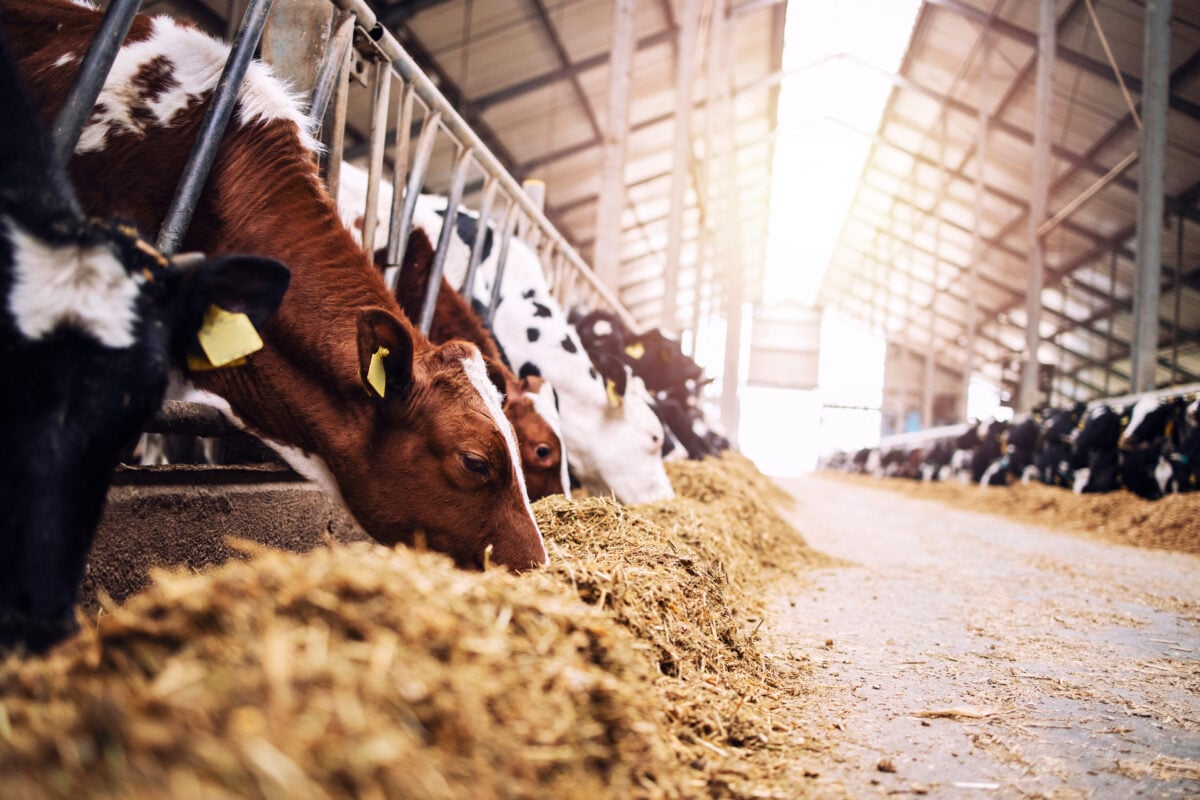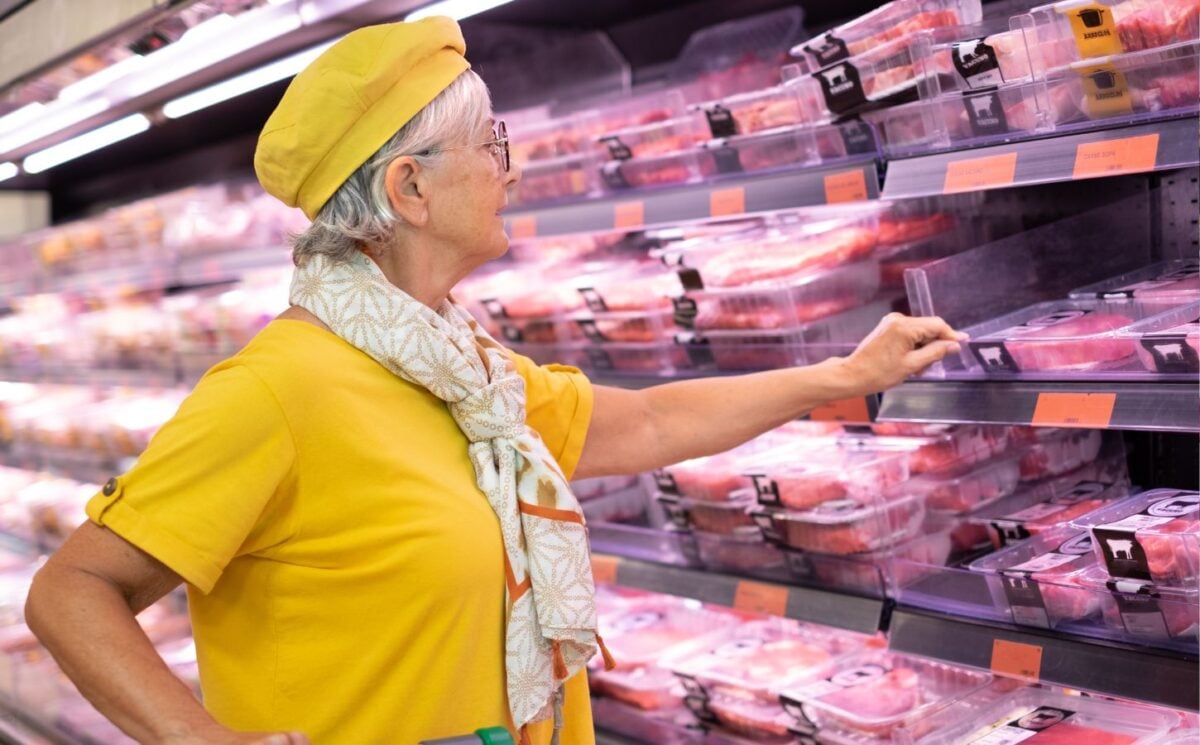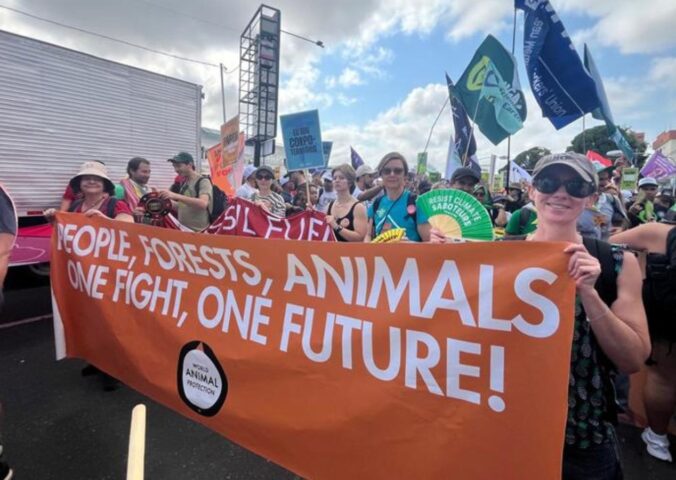New research has indicated that labelling animal products with cigarette-style warning labels could reduce consumption.
Cigarette packets sold around the world feature graphic images and stark warnings to dissuade people from buying them. According to the Durham University study, similar labels could help consumers make informed choices about the dangers the meat industry poses to climate disaster, health, and future pandemics.
The study is published in the journal Appetite. The research, which found meat purchases could be reduced by 7-10 percent, suggested that labels using a graphic image were the most effective. This is similar to cigarette packaging, which shows images of damaged lungs, rotting teeth, and the effects of smoking in the presence of young children.
The study
The subjects of the study were 1001 adults who regularly ate meat, split into four groups. They were each shown pictures of cooked meat, fish, vegetarian and vegan meals in canteen-style, for example burgers and quiche. Each picture contained either a climate warning label, a health warning label, a pandemic label, or no label at all.
The study found that pandemic warnings were the most powerful dissuader, with fears that another animal-originating pandemic could be on the horizon with animal industries still posing huge zoonotic disease risks. These warnings were found to reduce meat choices by 10 percent, followed by health warnings at 8.8 percent, and finally climate warnings at 7.4 percent. However, the team of researchers believe these differences are not statistically worthwhile. Overall, the participants were found to feel the climate warnings were the most credible of the three.
“Reaching net zero is a priority for the nation and the planet,” Jack Hughes, a PhD candidate who led the Durham study, told the Guardian. “As warning labels have already been shown to reduce smoking as well as drinking of sugary drinks and alcohol, using a warning label on meat-containing products could help us achieve this if introduced as national policy.”
Work to be done to meet Net Zero targets
While it was recently revealed that meat consumption has hit an all-time low in the UK, the Climate Change Committee (CCC), who advises the British government on its net zero goals, has made it clear the UK needs to reduce its meat consumption a further 20 percent by 2030, and then 50 percent by 2050, to meet the goals. A recent YouGov poll found that 72 percent of the UK identify as meat-eaters.
“When you combine that [CCC advice] with the fact that high meat intake is linked to lots of health issues, and the way that we currently farm, or certainly some of the most common ways of farming, are also very heavily linked to the potential of pandemic outbreaks, it becomes clear that there are multiple reasons why the current way that we eat meat is maybe not the best way to do it,” said Hughes.
Animal agriculture and the environment

The United Nations has been advocating for significant changes to global food production for several years now, while also recommending individuals change their daily eating habits, shifting to diets richer in plants and plant proteins.
Farming produces greenhouse gases in several ways throughout its supply chain. One example is the enormous amount of deforestation to grow the crops and rear the animals. This reduces carbon ‘sinks’, vital to the environment, while also releasing gases previously stored in the soil. Animal agriculture is also responsible for about 90 percent of the world’s water footprint.
Next is the sheer amount of energy required for the industry to achieve its production of meat. Besides rearing the animals, a vast amount of energy is needed to grow all the feed the animals require. Feed is, in fact, the prominent energy user, totalling approximately 75 percent of all the energy used. The remainder accounts for heating, ventilation, and lighting.
Besides carbon dioxide, there is also the significant issue of methane and nitrous oxide gases being produced in large quantities. These are released through sources that include the use of fertilizers, cow belches, and animal waste. Animal agriculture produces 37% and 65% of global methane and nitrous oxide emissions respectively.
To add to this, animal agriculture has incurred mass biodiversity loss, toxic pollution and dead zones.






